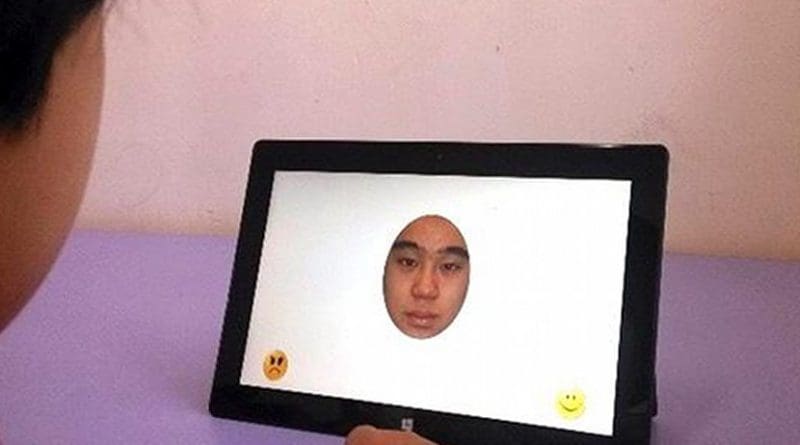Reducing Racial Bias In Children
We tend to see people we’re biased against as all the same. They are “those people.” Instead of thinking of them as specific individuals, we lump them into a group. Now an international team of researchers suggests that one way to reduce racial bias in young children is by teaching them to distinguish among faces of a different race.
The study, published in the journal Child Development, is the first to show a lasting effect – and in kids young enough to not be too set in their ways.
It is co-authored by researchers from the University of California San Diego, the University of Toronto, the University of Delaware, l’Université Grenoble Alpes in France, and Hangzhou Normal University and Zhejiang Normal University in China.
Two 20-minute sessions with 4- to 6-year-old Chinese children, in which they were trained to identify black male faces as individuals, reduced implicit bias in the children for at least two months.
Key to reducing the bias? The repeat session.
“A single session had minimal immediate effects that dissipated quickly. The lesson didn’t stick. But a second session a week later seemed to act like a booster shot, producing measurable differences in implicit bias 60 days later,” said Gail Heyman, a professor of psychology in the UC San Diego Division of Social Sciences and a senior co-author on the study.
Kang Lee, of the University of Toronto and also a senior co-author, said, “We know from other research that preferences for your own race develop in early childhood. Our method has the advantage of being suitable for very young children, and it also improves children’s ability to recognize faces, which is an important social skill in and of itself.”
First author on the study is Miao K. Qian, of Hangzhou Normal University and the University of Toronto.
The researchers are careful to note that racial bias is complicated. For starters, psychologists think there may be at least two different types of bias: implicit bias, or the extent to which we have subconscious negative and positive associations with different races, and explicit bias, or preferences we’re more aware of and can (if we’re not being guarded) articulate. Implicit bias may have perceptual roots, arising from greater exposure to people of your own race, while explicit bias may be learned socially from adults and peers. Then there’s the question of behavior. How implicit or explicit bias translates into biased behavior is a subject yet to be fully explored.
“We think that reducing implicit racial bias in children could be a starting point for addressing a pernicious social problem,” Heyman said. “But it is not the complete answer to racial discrimination or to systemic, structural racism.”
The researchers worked with 95 children in an eastern city in China. All the kids were Han Chinese and, according to their guardians’ reports, none had direct interaction with any non-Asian people prior to the study. As with most longitudinal studies, there was attrition among participants for a number of reasons, with a final sample, at day 70, of 50.
To measure bias, the researchers used their own Implicit Racial Bias Test (or IRBT), which they’ve validated in a previous paper with subjects in China and Cameroon. The IRBT is a preschool-friendly adaptation of the implicit association test (or IAT). The logic of the two tests is similar: People are quicker to associate positive attributes with members of their own race than with those of another racial category. A difference in response time is taken as a measure of implicit bias. One advantage of the IRBT, the researchers say, is that it uses only pictures instead of words: simple and intuitive smiley and frowny icons that subjects are asked to pair with neutral faces of their own race or a different one.
After measuring the children’s levels of pro-Asian/anti-black bias by calculating how quick they were to pair a frowny or smiley icon with a black male vs. an Asian male face, the researchers assigned them randomly to three different training groups. One group saw black male faces, a second group saw white male faces, and a third group saw Asian male faces. These last two groups were controls to see if learning to differentiate among faces of any race, different from one’s own or the same, produced results that generalized to a third.
Individuation training consisted of learning to identify five different faces that had been numbered 1 through 5, starting with just two faces and working up to five. Training continued until the child correctly matched all five faces with their numerical “names.” This took 20 minutes on average.
There were two training sessions a week apart. A day after each training, children took the implicit racial bias test again. They were tested for bias a final time 60 days after the second training.
The results: Only the training to distinguish among black faces reduced pro-Asian/anti-black bias. Training on white faces or Asian ones didn’t make a difference. Reduction in bias was most significant after the second session and it had a longer-lasting effect than had been documented before.
The researchers are now working with a larger, more diverse group of children in Toronto over a longer term. If their intervention to reduce implicit racial bias is effective in that setting as well, they hope to develop a more consumer-friendly version of their training sessions: a fun, gamified app that could be used in schools and at home.

